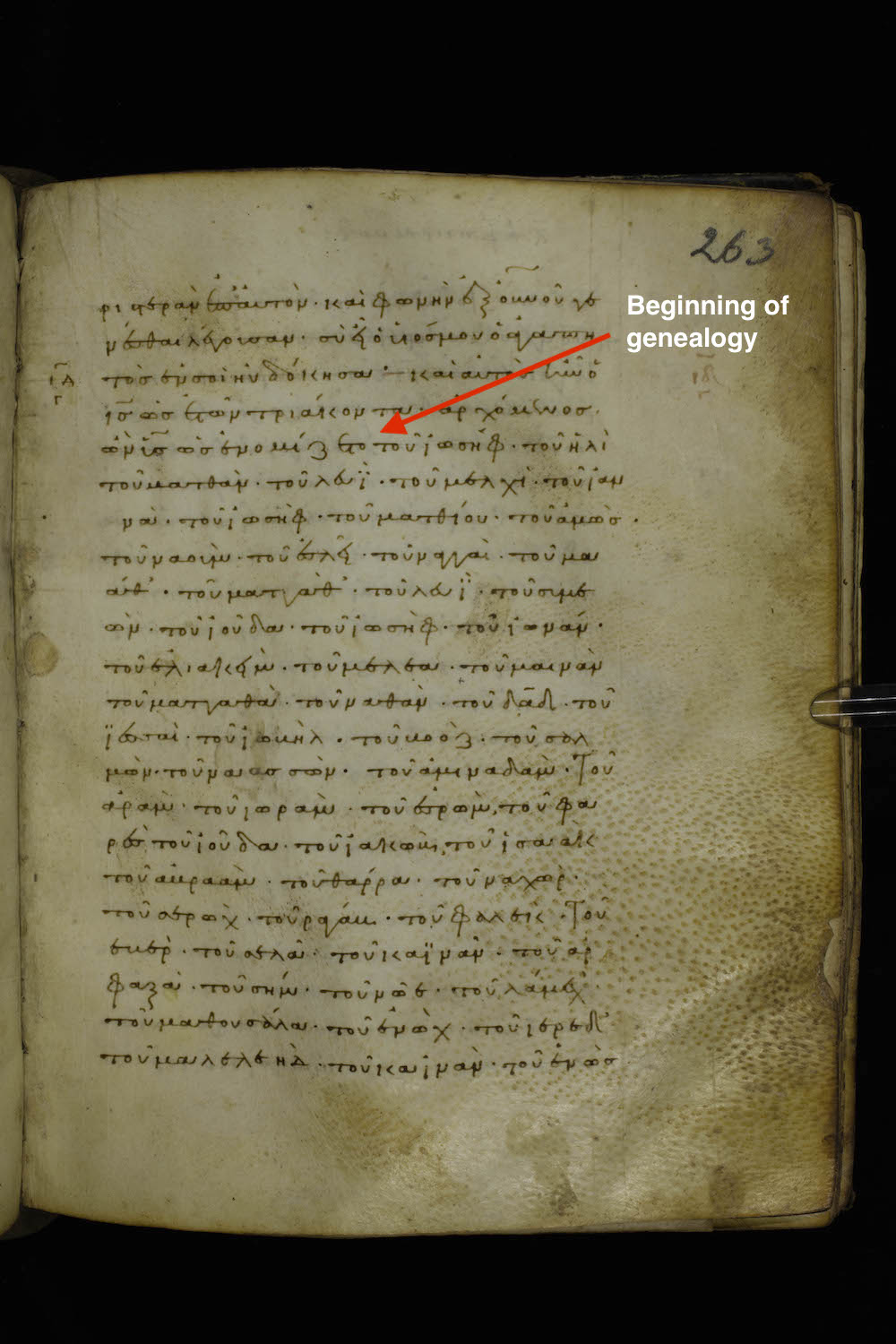By: Andrew K. Bobo and Andrew J. Patton
The Center for the Study of New Testament Manuscripts’ (CSNTM) digital library contains hundreds of Greek NT manuscripts, each with its own story to tell. In our “From the Library” series, we will feature individual manuscripts from our collection in order to showcase their unique beauty and importance. This is part of CSNTM’s mission to make NT manuscripts accessible for everyone.
If we’re honest, the genealogy is often considered the most boring part of the birth narratives in Luke. When was the last time you heard a message about that part of the Christmas story? But throughout the centuries, the Christian tradition developed unique ways of presenting this part of the biblical story—often setting it apart to make it more readable and more identifiable. In this blog we’re going to show you how some scribes copied Luke 3.23–38 and explain one example where it went terribly wrong.
Copying the Genealogy of Jesus
Of course, some manuscripts do not differentiate the genealogy from the rest of the biblical text. A manuscript we digitized at the National Library of Greece, referred to by scholars as Gregory-Aland (or GA) 780, is one example of this pattern. As you can see, there is no break in the text where the genealogy begins, and it is written in the same single column style.
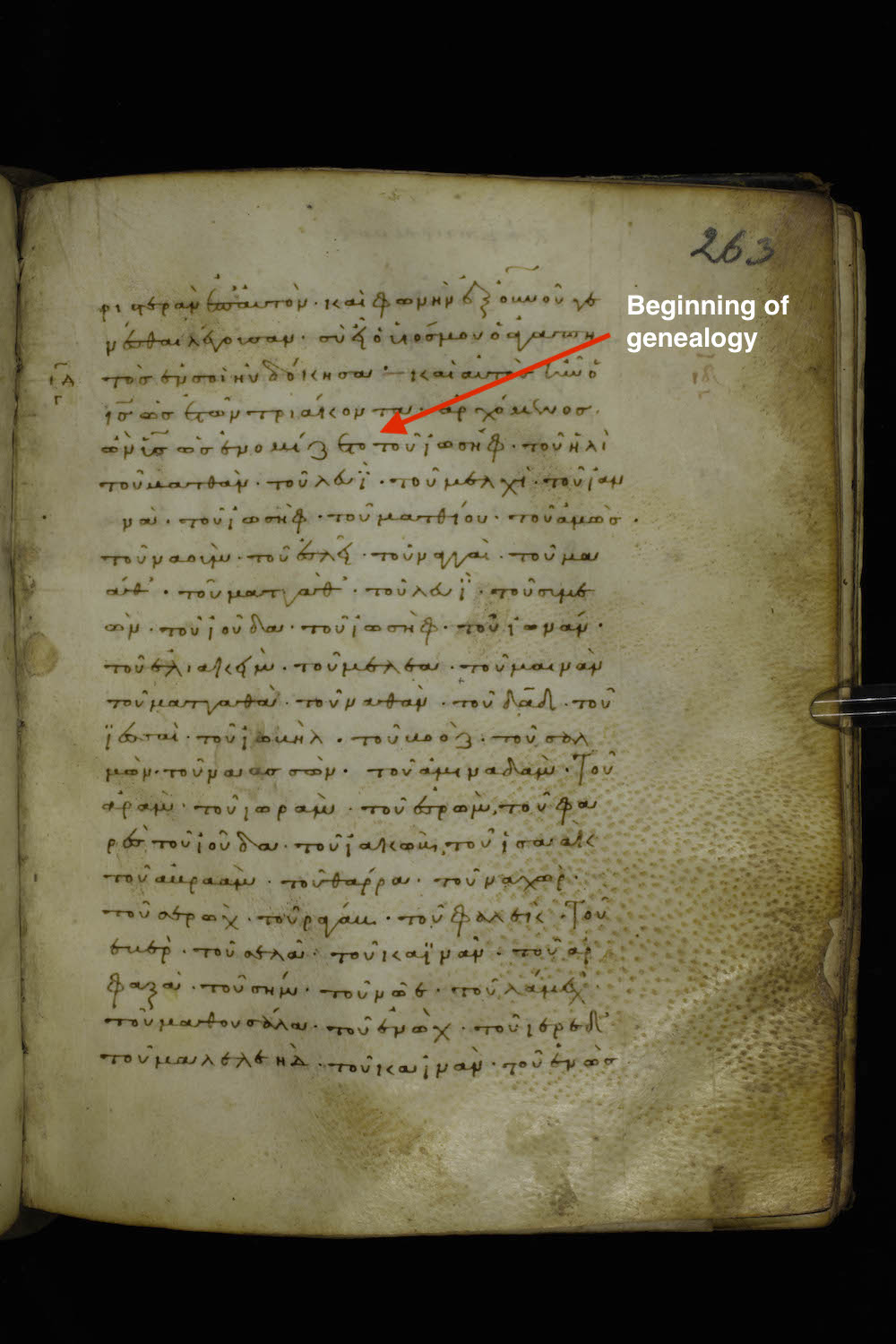
The text of Codex Vaticanus (GA 03, or “B”) was written in three columns, but the scribe clearly differentiated Jesus’ genealogy by listing the names in a new format. The first word, ΤΟΥ (tou) is set on the left margin, and then there is a noticeable space before each name is written.
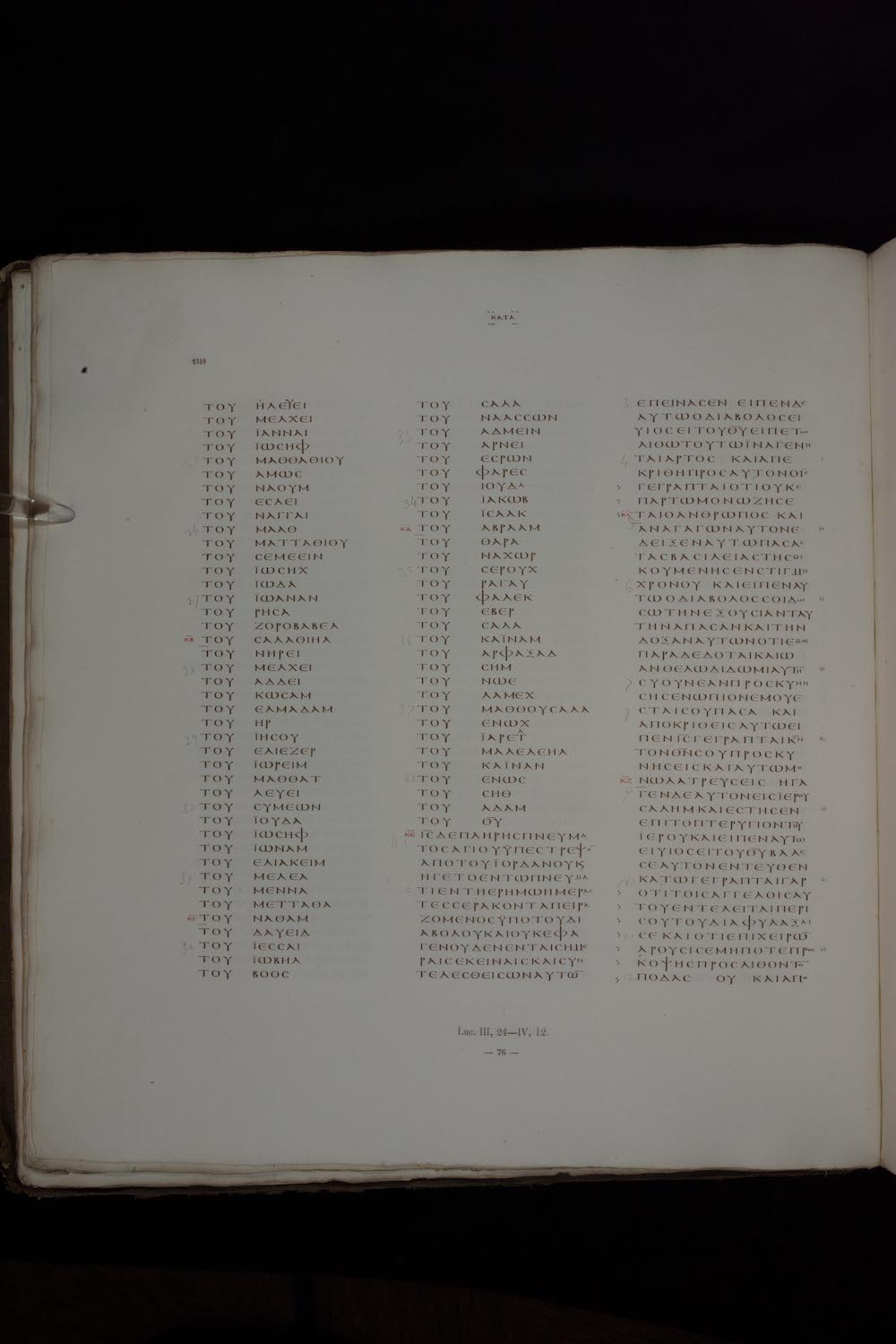
Other manuscripts break their normal pattern of copying the text by arranging Jesus’ lineage into separate columns. GA 773, also from the National Library of Greece, organizes the names into two columns. The scribe also included commentary in the margins.
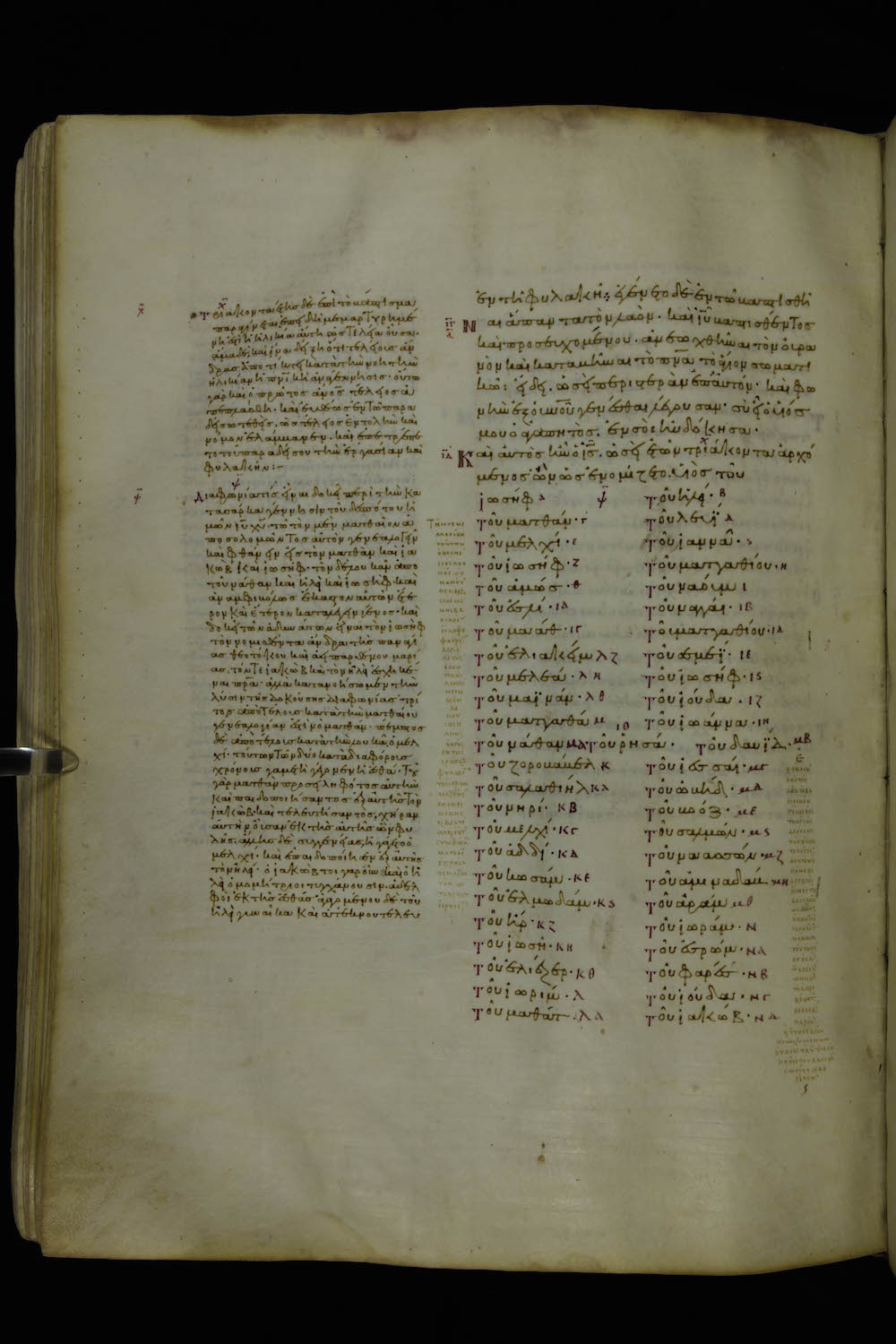
The scribe who copied CSNTM’s manuscript (GA 2882) wrote the Scriptures in a single column with very neat handwriting. At Luke 3.23, the scribe broke the flow of the text to copy the list of names in three columns. The names proceed from left to right with the article ΤΟΥ (tou) written with a large red tau before the name.
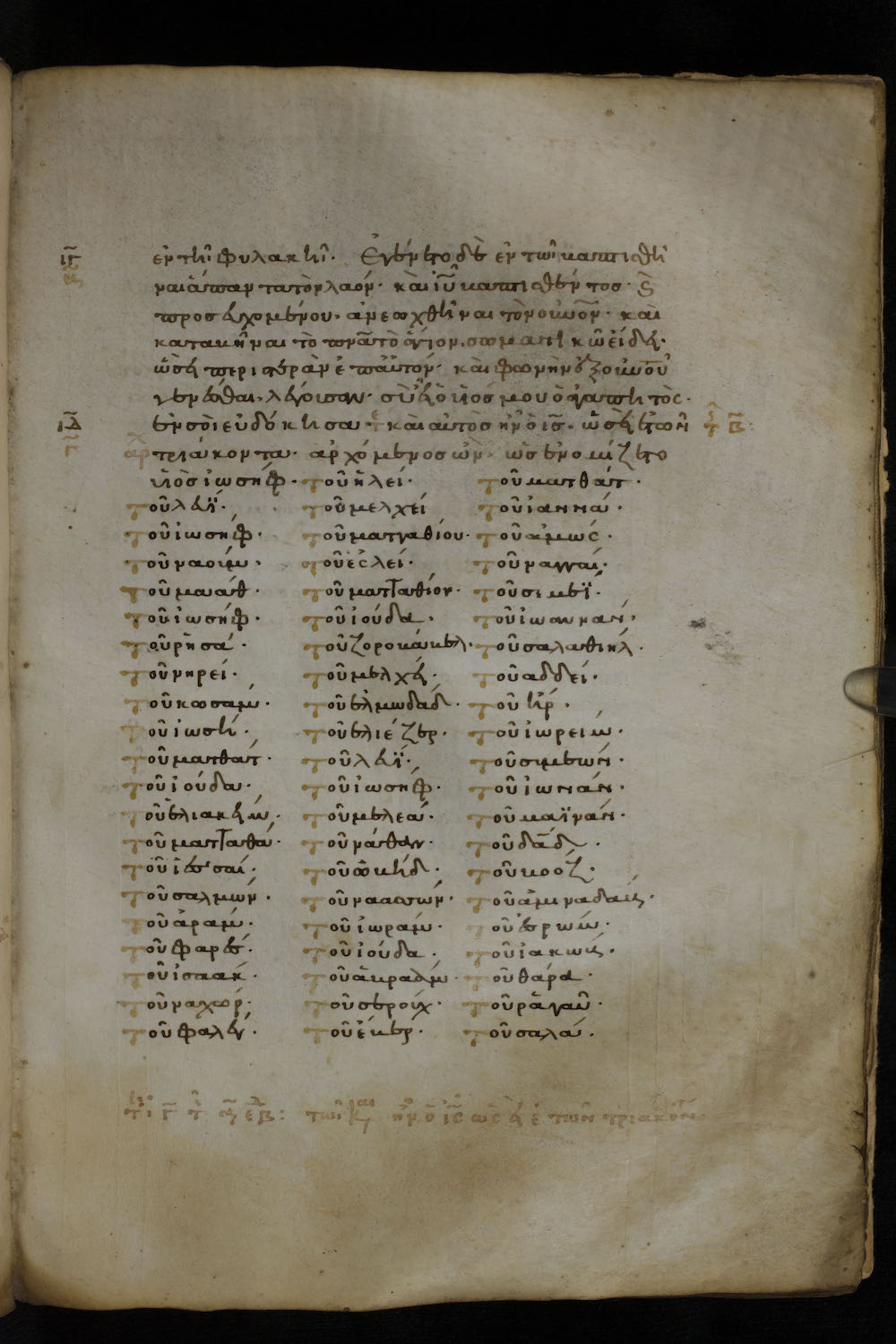
A Scribal Error in the Genealogy
When scribes copied Jesus’ genealogy in columns, it was perhaps intended to make the passage more prominent and easier to read. But one scribe who copied GA 109, a fourteenth century Gospels manuscript in the British Library’s collection, made an infamous mistake. The scribe completely rearranged Jesus’ genealogy. As you probably know, Luke traces Jesus’ ancestry from Joseph all the way back to Adam, concluding with “Son of Adam, Son of God.” In GA 109, the scribe wrote, “Son of Adam, Son of Aminadab, Son of God, Son of Aram”! Apparently, God was born from Aram! How did the scribe make such a serious mistake?
It seems the scribe’s exemplar—the manuscript from which GA 109 was copied—had Luke’s genealogy written in two columns. These should have been read going down each column completely before going back to the top of the next column. But this scribe read the columns from left to right, putting Jesus’ descendants all out of order. At one point, there are two names in the proper order: “Son of Melki, Son of Addi.” We conjecture that at this point the exemplar proceeded to a new page, so the scribe happened to get two correct in a row, but then continued to make the same mistake. Regardless of how absentmindedly the text was copied, we have to wonder whether the scribe knew Greek because “son of God” is written with a nomina sacra, which should have given enough pause to catch the mistake. Whatever the scribe’s Greek proficiency, leaving Jesus’ genealogy out of order is a serious error which was only possible because of the varied ways Luke 3.23–38 was copied in columns in some manuscripts.
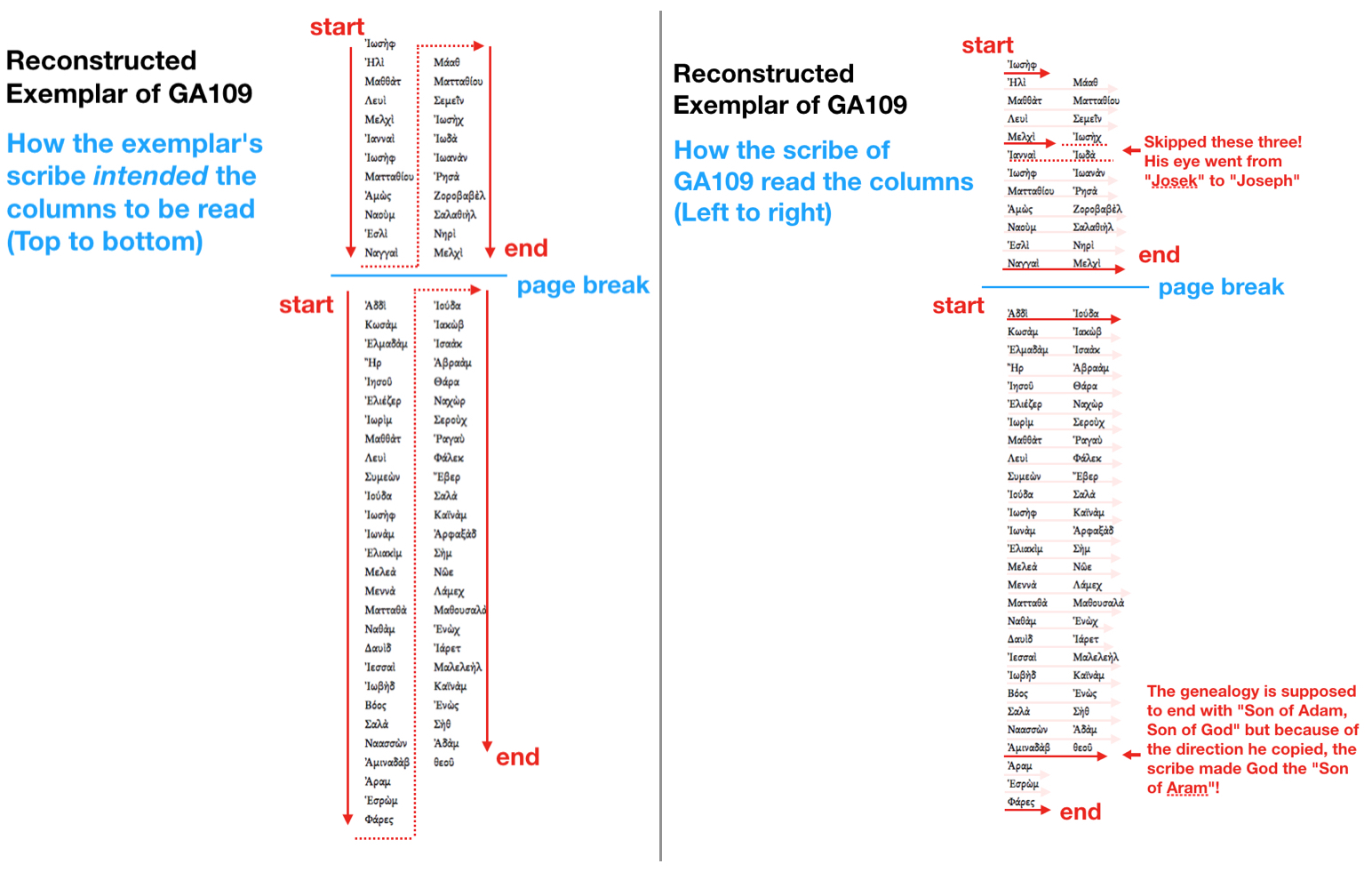
Conclusion
Though it is easy for us to gloss over the list of Jesus’ ancestors when studying the birth narratives in Matthew and Luke, the ancient and medieval scribes deliberately copied the story in ways that set it apart and drew attention to it. The various ways the Lukan genealogy was copied caused us to wonder why they took the time to write the names like this. There could be a few practical reasons. The scribes may have done this because it was easier to write the names (some of which are duplicated in the text, like Joseph in 3.23 and 3.30) without error in column form. Or it could be that they found it easier to read the names for public recitation when they were listed in columns rather than written in paragraph form. But we speculate that in their era of kings and heroes they found greater significance in the genealogy of Christ—a significance that is often missed by modern readers. Whatever the reason may be, the genealogy of Jesus in Luke 3.23–38 has a fascinating and infamous place in the textual history of the New Testament. So this year if you read the story of Christ’s birth, don’t skip over the long list of names Luke gave us. Take a moment to reflect on what a long lineage like Jesus’ would have meant to the early readers of Luke’s Gospel.
* If you’re interested in looking at additional examples of how scribes copied Luke’s genealogy, there are a few easy ways to do this in our manuscript library. You could use the “Jump to Book” feature to navigate easily to the beginning of Luke in all the manuscripts we have tagged on our site. The other way would be to search “Luke 3” or “Luke 3.23-38” in the search bar of our website. This guide will explain how to use these features if you need extra help.
We suggest taking a look at some of the most famous manuscripts like Codex Sinaiticus and Codex Bezae (05). You also could look at GA 800, which has commentary from church fathers surrounding the text.

